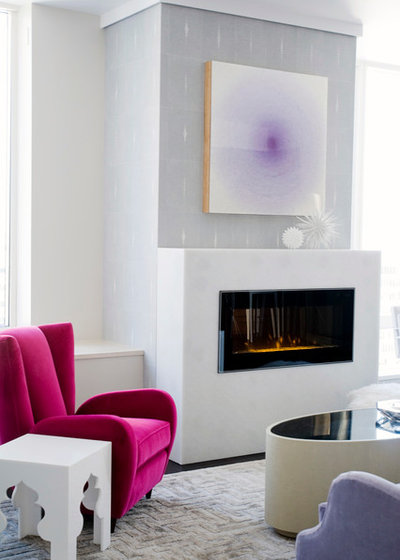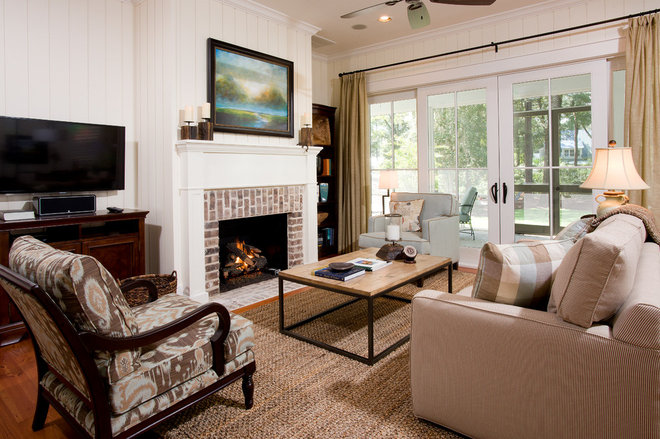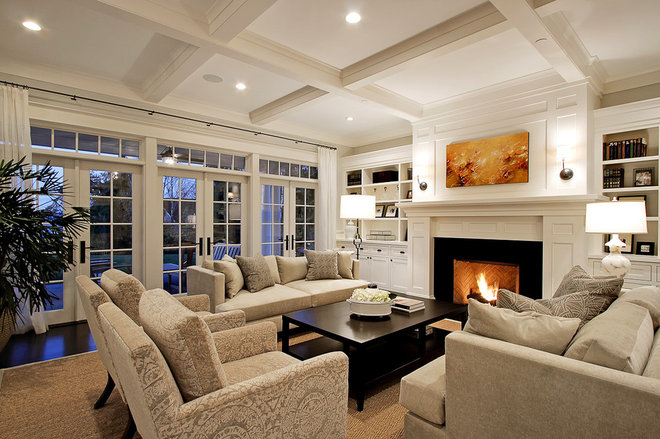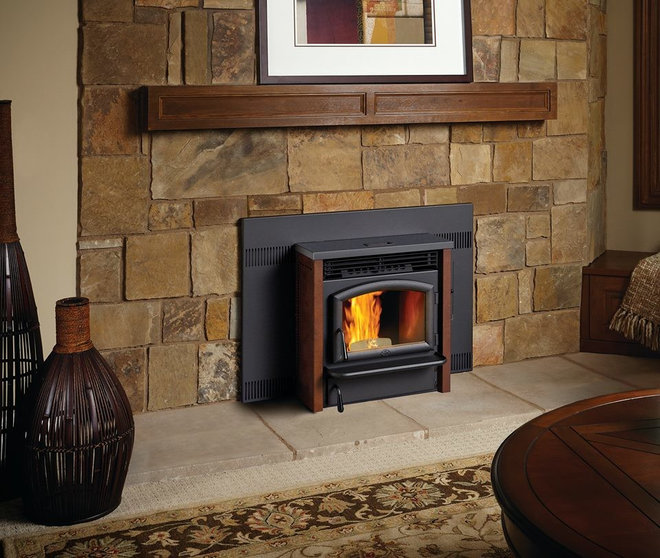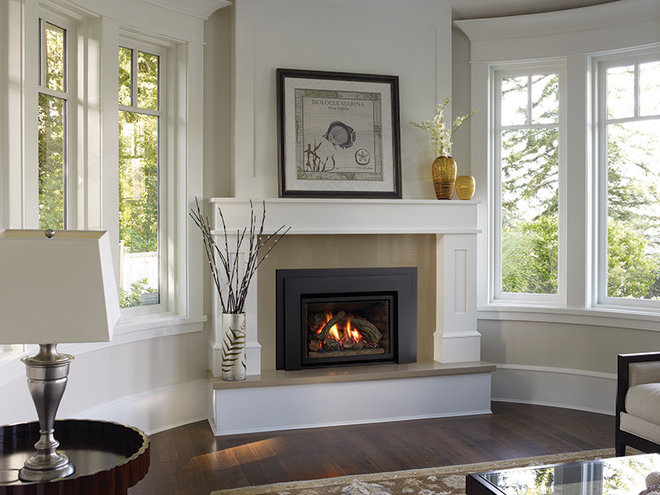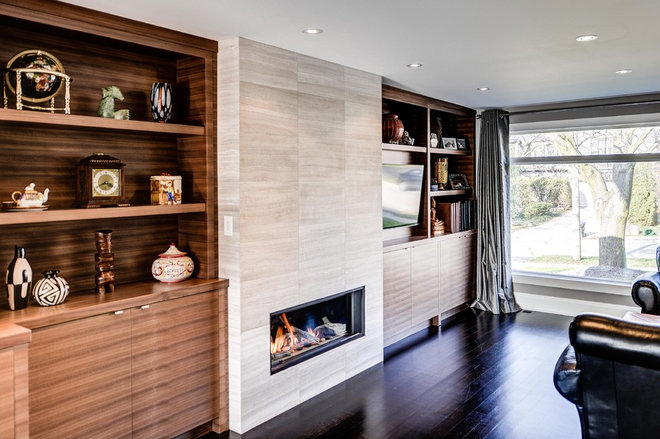How to Convert Your Wood Burning Fireplace
How to Convert Your Wood Burning Fireplace
That Wood burning fireplace may look grand in the living room, and a blazing fire on a chilly night is certainly tempting — but beyond that, traditional fireplaces offer surprisingly little reward for the trouble. Converting an old fireplace to gas or electric can be a smart choice, allowing you to use the fireplace more often during the year (just flip it on during a chilly evening and turn it off when you’re done) and heating the house during the colder months.
How to Convert Your Wood Burning Fireplace
How to Convert Your Wood-Burning Fireplace
Why switch from wood? Wood-burning fireplaces do little to heat a room — in fact, they typically pull warm air from inside the home and send it right up the chimney. If someone in your house has asthma, allergies or other respiratory issues, irritants from the fireplace can make these problems worse. Wood-burning fireplaces are also responsible for a surprising amount of air pollution, which is why there are restrictions on wood burning in some areas. They can also cause home fires, due to a buildup of creosote, the substance left behind on the chimney walls after wood is burned.
How to Convert Your Wood-Burning Fireplace
How to Convert Your Wood Burning Fireplace
Conversion Options
Gas fireplace insert. This is essentially a complete fireplace installed within the firebox of the existing wood-burning fireplace. It typically costs between £600 and £1,800, plus professional installation. Because gas fireplace inserts function as heaters, they give off significantly more warmth than wood-burning fireplaces and vented gas logs; you can choose a model with adjustable flames so you can control the amount of warmth it gives off. They can be quite energy efficient, and because the glass doors are always shut and the fireplace exhausts to the outdoors, they are a healthier choice than traditional wood-burning fireplaces or gas logs without airtight doors. Bottom line: A gas fireplace insert can provide efficient warmth and ambience without the health or environmental concerns associated with wood burning, but at a higher initial cost than other options.
How to Convert Your Wood-Burning Fireplace
How to Convert Your Wood Burning Fireplace
Electric fireplace insert. This is installed in much the same way as a gas insert, with the exception that it does not need to vent to the outdoors, making it an excellent choice for non-functioning chimneys. Electric inserts cost far less than gas, usually around £300 to £1,200 plus the cost of the installation. There is no actual fire in an electric fireplace, but newer models (like the one shown here, or the ones in our showroom) are available with highly realistic LED “flames” for ambiance. The lack of a need for venting also makes an electric fireplace a good choice if you would like to mount a TV above the mantel. Like gas fireplace inserts, they provide good heat.
Bottom line: Electric fireplace inserts are a good choice if you have a non-functioning chimney or wish to place a TV over the mantel, and they typically cost less to install than a gas insert.
How to Convert Your Wood Burning Fireplace
How to Convert Your Wood-Burning Fireplace
Vented gas log. This typically costs between £400 and £900. Because you must leave the damper open at all times with vented gas logs, your home can lose a lot of heat — even more than with a wood-burning fireplace. To remedy the heat-loss issue, you can have airtight glass doors installed (for an additional cost), though the gas logs will still not provide much heat into the room.
Bottom line: Vented gas logs can be a good budget option if you are looking for more ambiance than heat.
How to Convert Your Wood-Burning Fireplace
How to Convert Your Wood Burning Fireplace
Safety note: Avoid unvented gas logs. Unvented gas logs are not recommended, because they release air from the fireplace back into the room with no exterior ventilation, potentially causing serious health problems, and they are banned in many areas. Even though gas fireplaces do not produce smoke, they still create pollutants, including carbon monoxide, making venting essential.
How to Convert Your Wood-Burning Fireplace
How to Convert Your Wood-Burning Fireplace
Wood pellet fireplace insert. Cleaner burning than wood, wood-pellet stoves can provide a lot of heat and are relatively inexpensive to operate. The initial price including installation is comparable to that of a gas fireplace insert, from £1,000 to £2,000. They do require electricity to run the hopper, which feeds wood pellets into the fire. Some chimneys may need to be outfitted with a metal insert for safety.
Bottom line: Wood-pellet fireplace inserts are an energy-efficient heating option that also provide the ambience of real flames and do not require a natural gas line.
How to Convert Your Wood-Burning Fireplace
How to Convert Your Wood-Burning Fireplace
Safety note: Check that chimney! If you are installing a fireplace insert that uses the chimney as a vent, be sure to have the chimney professionally cleaned and inspected before installation to avoid chimney fires.
How to Convert Your Wood-Burning Fireplace
How to Convert Your Wood-Burning Fireplace
Custom options. If you do not like the shape or style of your old wood-burning fireplace, or it is seriously damaged (many fireplaces and chimneys in UK are damaged or very old), consider removing the old fireplace entirely and putting in a new one. The cost will be much higher than using an insert (two to four times as much, with mason work and specialty materials fetching the highest prices), but you can choose exactly the style and materials you want.
Tell us: Do you have a wood-burning fireplace? Would you consider converting it to gas or electric?
Conversion solutions from world leading manufacturers like VALOR, GAZCO, STOVAX and PARAGON.
LIMEGREENUK.com
CALL US TODAY FOR A FREE QUOTE ON 029 2066 6622 or alternatively visit our showroom in Cardiff; the largest fireplaces showroom in Wales.
Original article written by Laura Gaskill on HOUZZ.com




